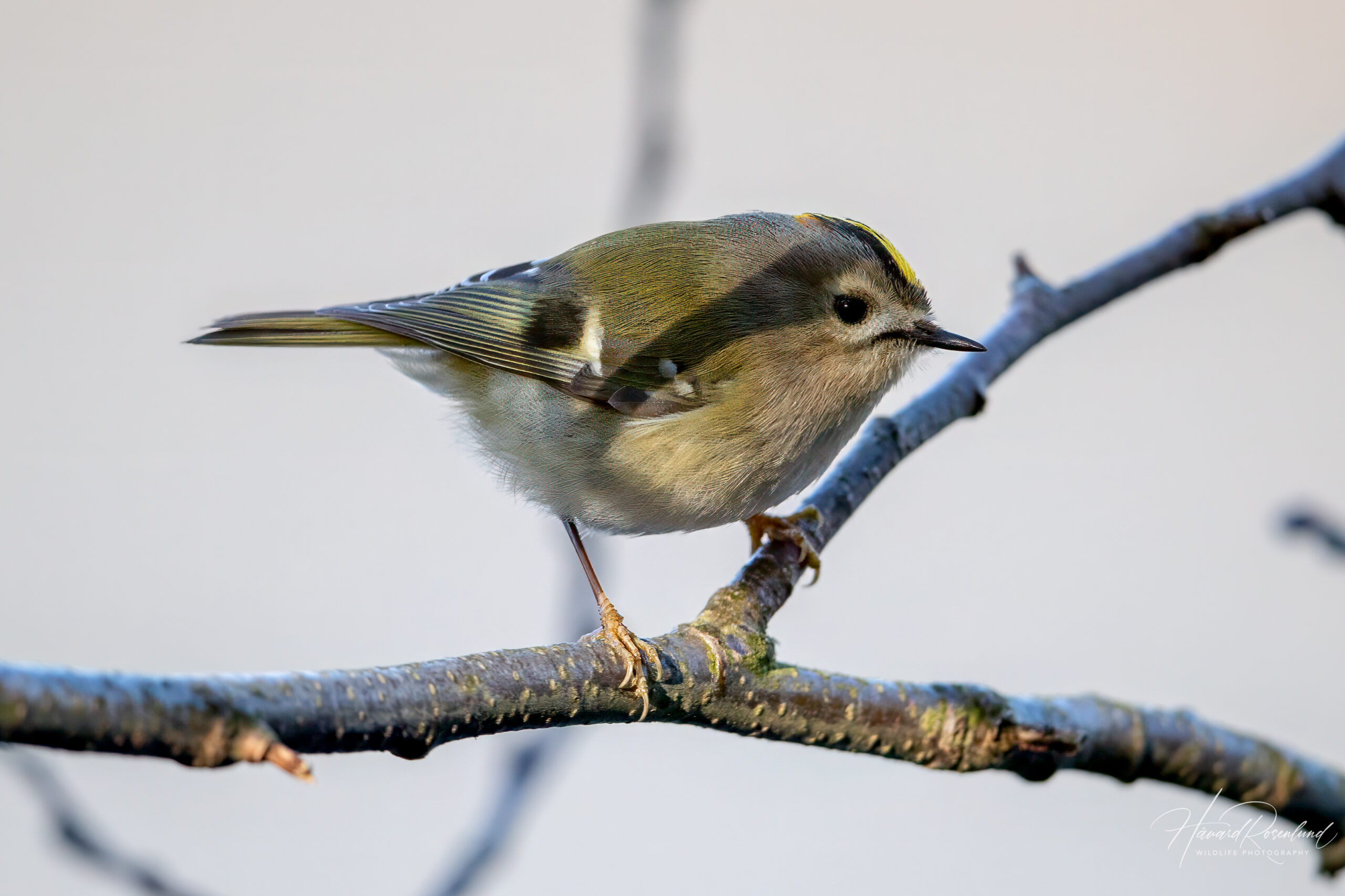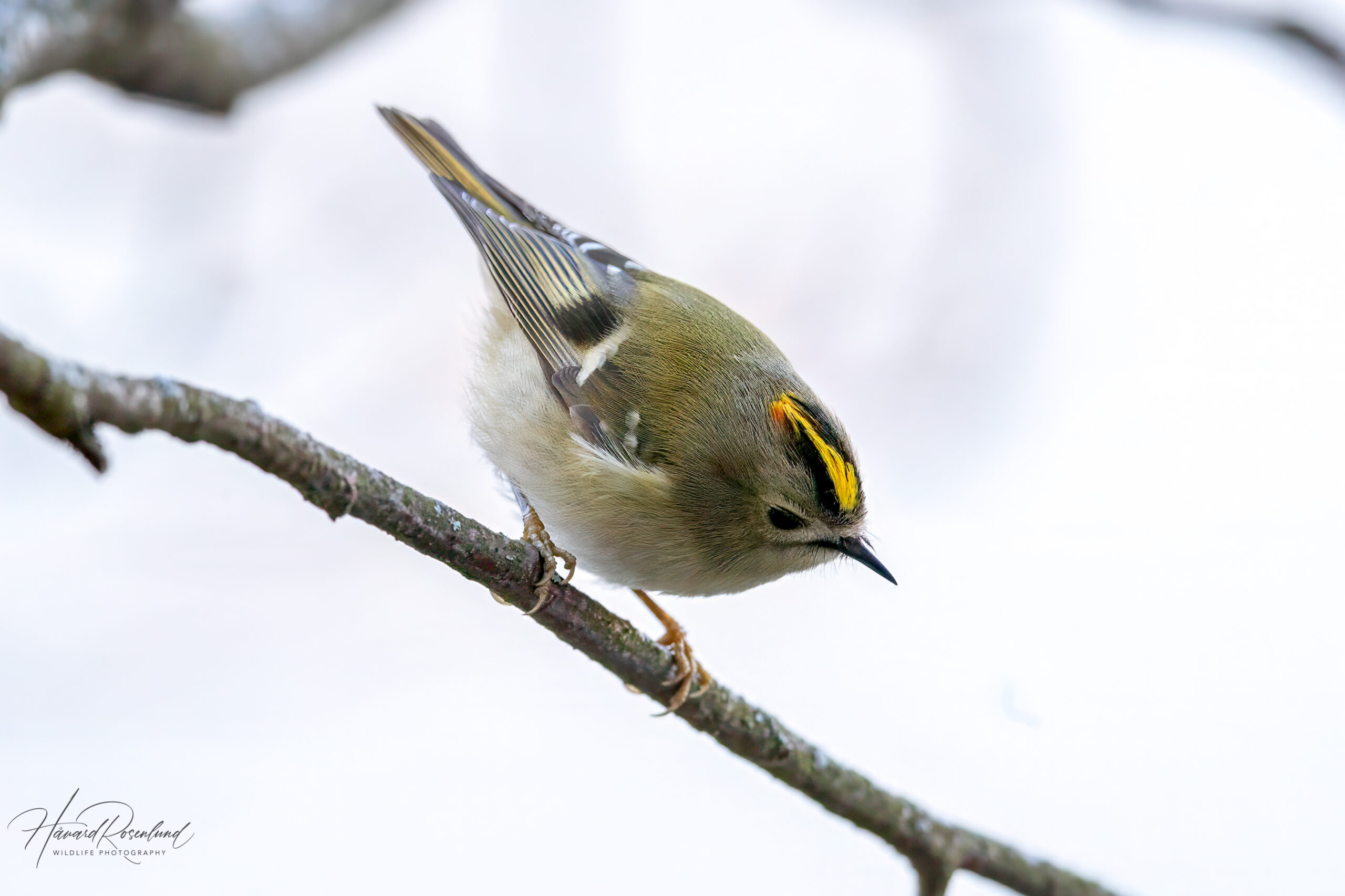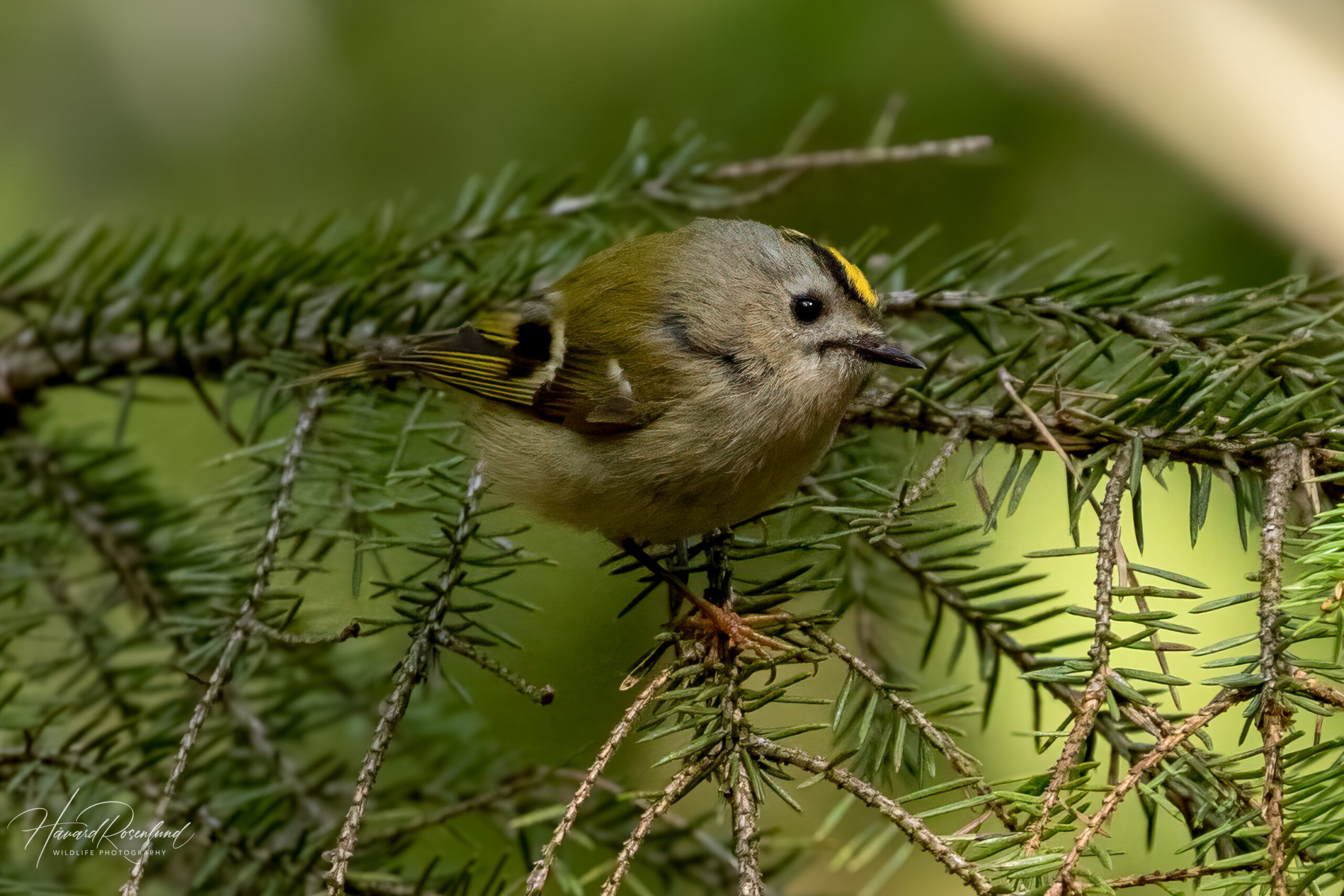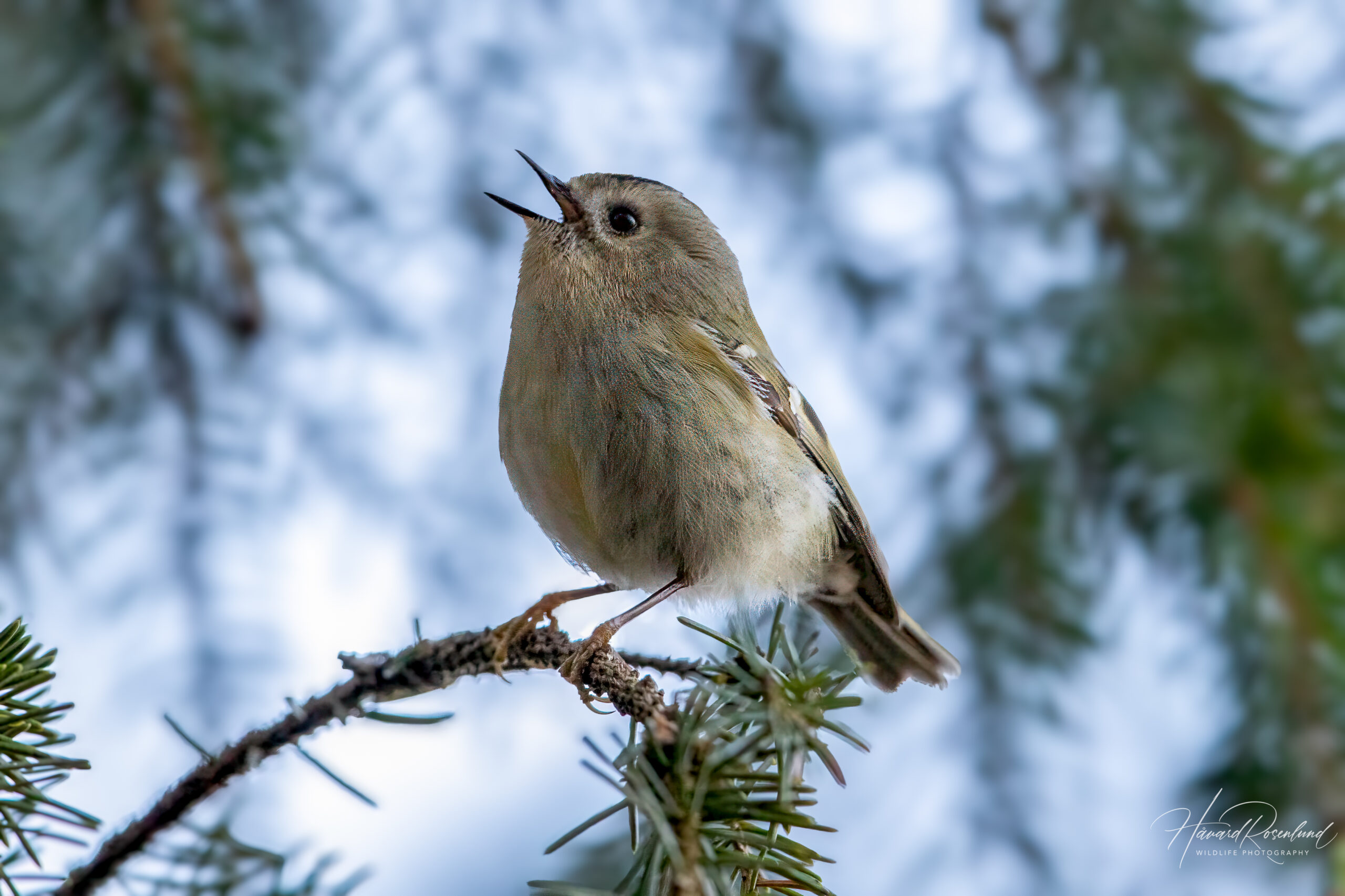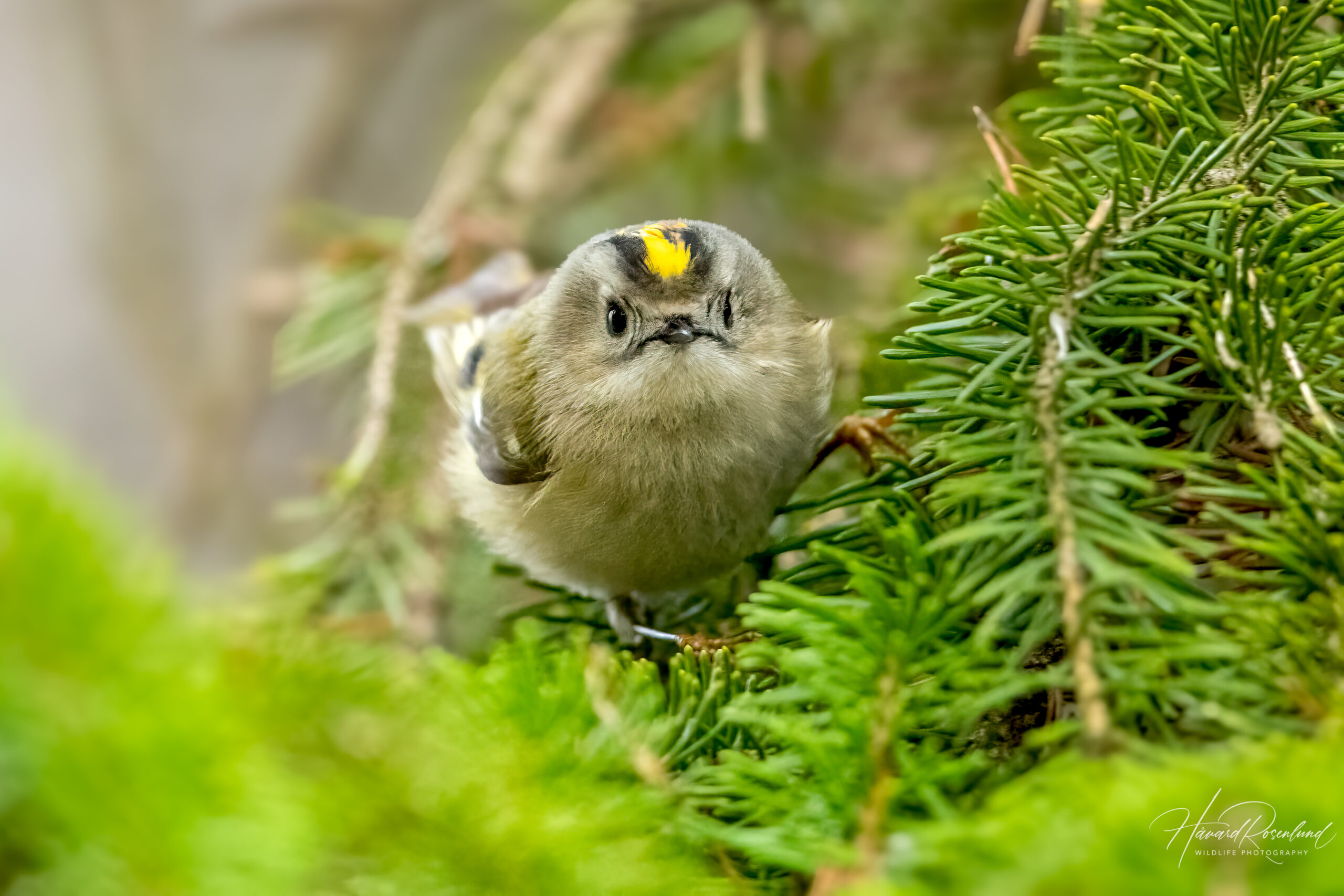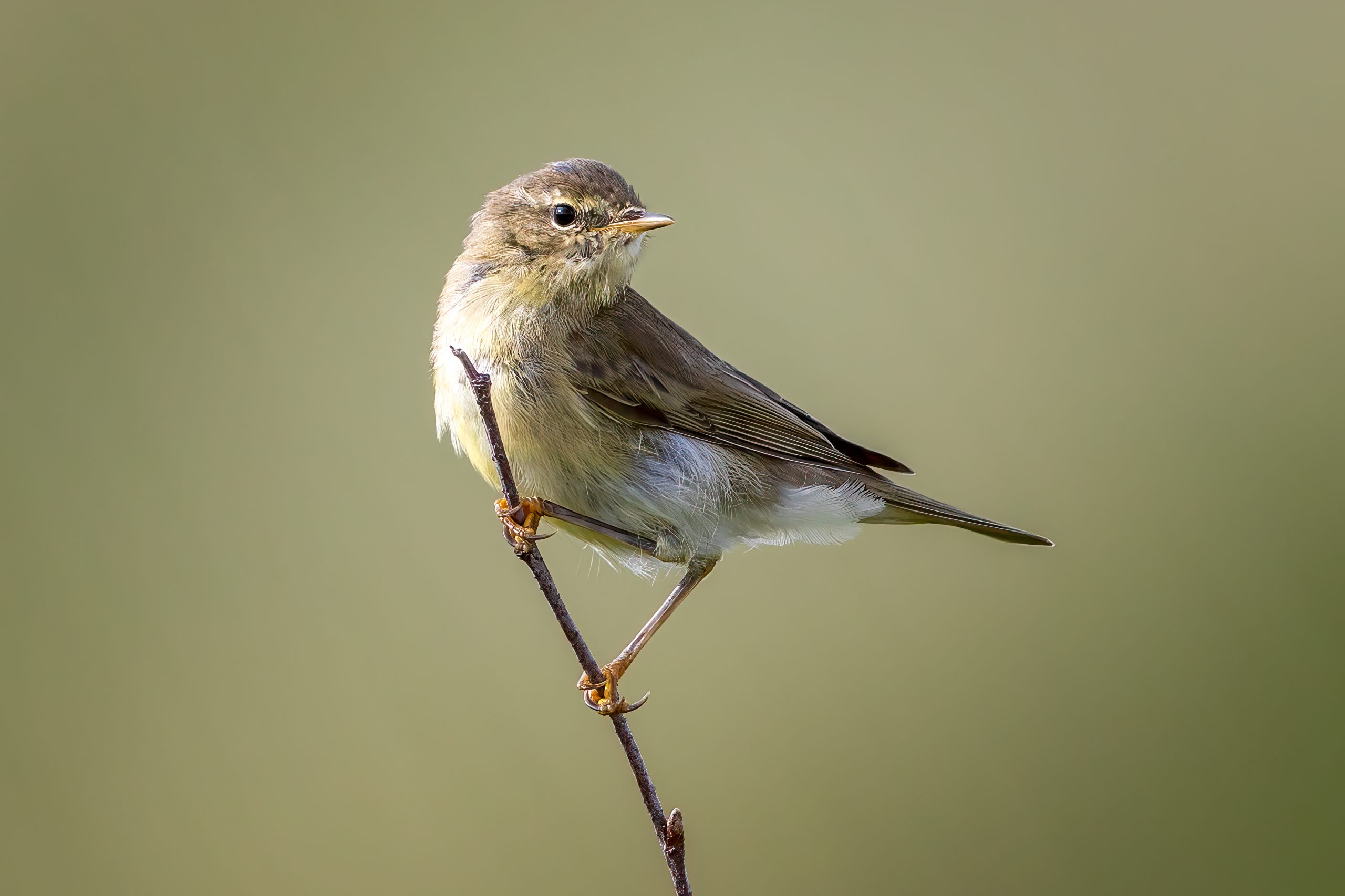Description
The goldcrest (Regulus regulus), Europe’s smallest bird, is found across much of Europe and parts of Asia. It boasts a distinctive yellow crest stripe, which it can raise and lower. This feature is especially prominent in males. Both sexes display olive-green upperparts and whitish underparts, with a black stripe flanking the crest. Adults range between 8.5 to 9.5 cm (3.3-3.7 in) in length, weighing 4 to 7 grams (0.14-0.24 oz). The goldcrest is similar to the firecrest (Regulus ignicapilla), which is also found in much of Europe, but can be distinguished by the absence of the firecrest’s distinct white eyebrow stripe.
This species is known for its high-pitched, vibrant song, which is among the highest-frequency bird calls audible to humans,. Some humans may stop hearing it altogether as they get older, as humans tend to lose the ability to hear higher frequencies as they age.
Diet & habitat
Primarily insectivorous, goldcrests feed on spiders and small insects. Their foraging technique involves acrobatic maneuvers among tree branches, often hanging upside down to pick prey from the underside of leaves and bark. In winter, they may include seeds in their diet and will sometimes frequent bird feeders for food. They inhabit coniferous forests, mixed woodlands, gardens, and hedgerows. Their preference for dense foliage not only facilitates feeding but also offers protection from predators.
Migration
Goldcrests exhibit partial migratory behavior; while some populations remain stationary, others migrate to southern or western regions during winter. These migrations are typically nocturnal, with birds often traveling in mixed flocks alongside other small birds for added safety. The phenomenon of “drift migration” is observed, particularly in the British Isles, where birds are displaced by strong winds.
Nesting
Breeding season begins in early spring, with goldcrests constructing well-concealed nests in conifer trees. The nest, an intricate, hammock-like structure attached to branches, is built by the female using moss, lichen, and spider silk. Clutches typically consist of 6-12 eggs, incubated solely by the female for 14-17 days. Both parents feed the chicks, which fledge 17-21 days post-hatching. Goldcrests may raise two to three broods per season.
Status
The goldcrest is listed as least concern on the IUCN Red List. Despite their vulnerability to harsh winters, their widespread habitat and reproductive success contribute to this status. However, habitat loss and climate change pose potential threats to some populations, and there has been evidence of moderate declines in recent years.




